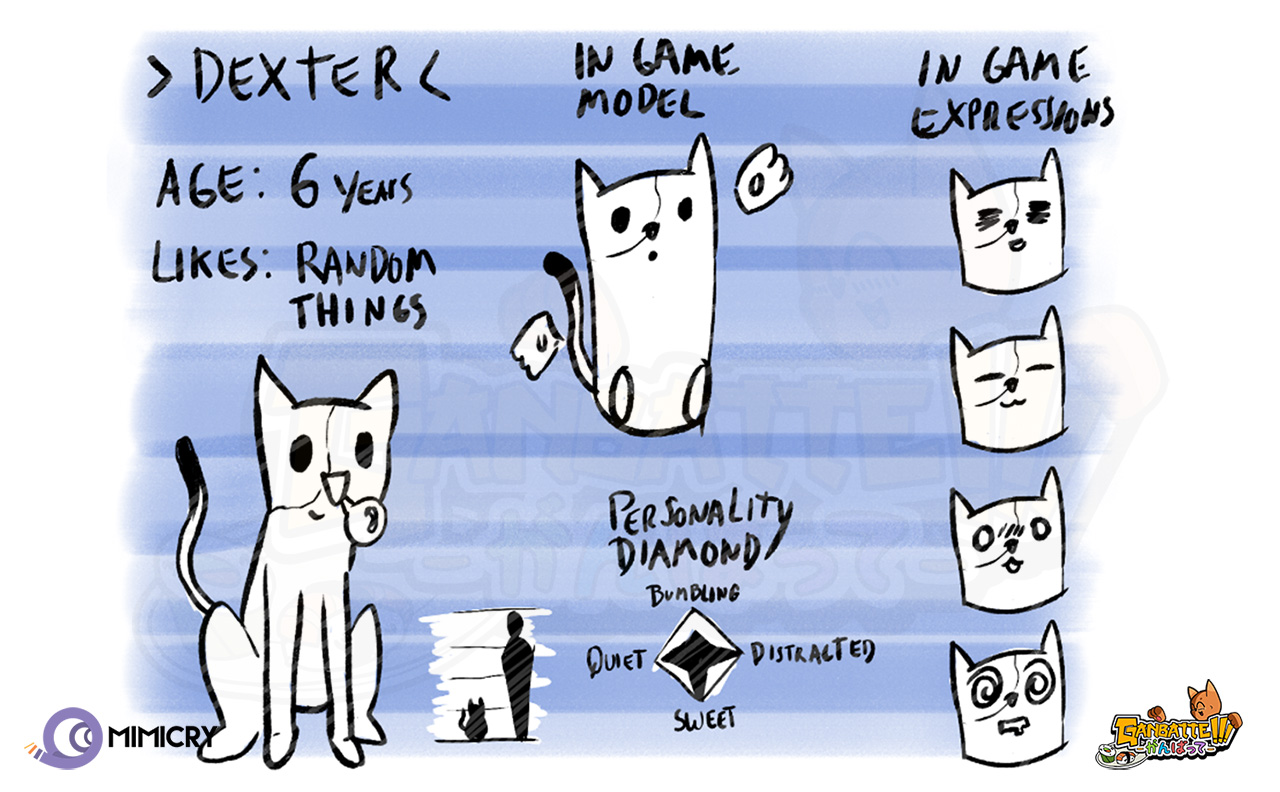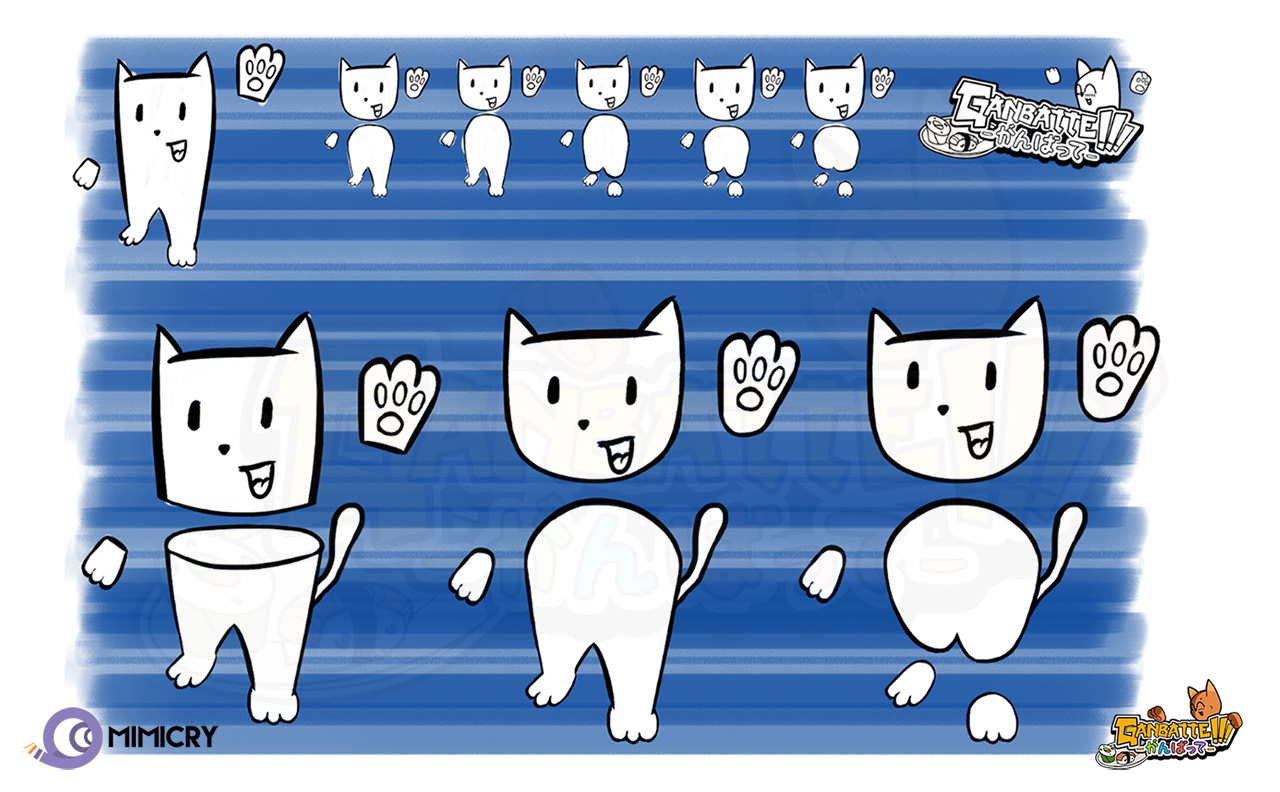Character design part 1 – body system and shape
Today’s blog post is the first in a series about the character design for Ganbatte. We’re starting off explaining the design of the cat’s body and its shape.
Developing a game for the Vive and the Rift places it own unique constraints on the project. In terms of trackable objects, we’re bound to 3 points: the HMD and both motion controllers. Sure, there are a bunch of peripherals on the market such as the Vive tracker, but their market penetration is too low for us to consider supporting them for now. The nature of VR as a platform has a big effect on our character design and the way we’ve designed the body system for the cats.
We’ve tried various IK systems to correctly simulate arm/elbow movement, but we were never happy with the results we got. They either didn’t respond well. Ended up still being glitchy. Or, simply turned out to be “in the way” of the action, blocking the table or the player’s view. In terms of quality, we’ve set the bar high, and current IK systems, at the moment, are unable to deliver up to the level we aim for. Therefore, we ended up deciding that we wouldn’t have arms. Or, in cat anatomy, we wouldn’t have front legs attached to the front paws.
In our character design process, lead by our artist Pedro Oliveira, we’ve considered 4 different body systems, sketched out in the image above. The first, all-in-one, is floating head paired with floating paws. The second body concept features the cat’s body, detached from its head and paws. The third body features a torso that’s attached to the head, without legs, or in a variation with flexible, hanging legs. Lastly, the fourth (top right) body concept has the head and hind legs attached to the body, leaving only the front paws (or hands as we sometimes call them) separated. After various design meetings, discussions and careful considerations, we opted to go for our 2nd concept. This system makes the best use of the 3 tracked points without losing the feeling of being a cat. Also, this design allows for all the cat customization (incl. accessories) options that we have envisioned.
The next step was to define the character’s cat-type. We’ve studied and conceptualized different types of cats, of different ages, sizes, and different body shapes. We decided to go with one cat type, which players are able to customize through various skins (color schemes) and a range of accessories (more about this in a future post!). This process led us to the creation of what has become Ganbatte’s mascot: Dexter! Dexter likes random things, he’s 6 years old and he’s easily distracted. The image you see above is a very early sketch, and we’ll iterate and expand on the design as we move forward.
Having defined the body system and cat type, our next step was to combine these two design choices and create the character’s final shape. During this process, we narrowed it down to 3 variations. The first one, which we lovingly called the “katana-chop” was quickly (slightly regretfully) abandoned for being A: a bit gruesome B: not really allowing for cool accessories like necklaces (where’s the neck!). The second one felt more like it! While the third option was a version we hadn’t considered before, featuring separate feet (or “hind paws” in cat anatomy). We ended up going for a variation of the second (bottom middle) design, of which we’ll show more of in a future post. Next week we’ll dive into Dexter’s expressions!
Thanks for reading, we’re happy to have you on board and we hope that you enjoy following the development process of Ganbatte! Learn more about the game and sign up for our newsletter over at ganbattegame.com
-Thomas
ps. I’ll leave you with a GIF captured during one of our playtest sessions: omnom nom nom!




